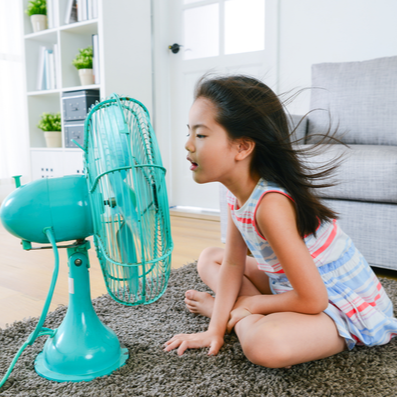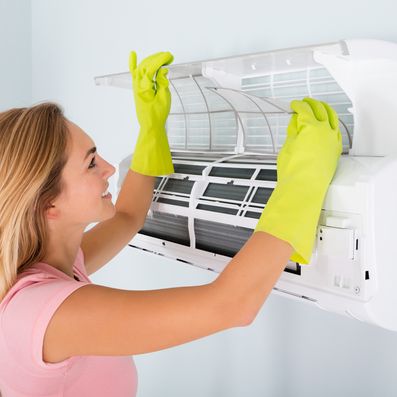The 10 Energy-Saving Tips Every Homeowner Needs to Know for Summer
Summer is here, and temperatures are spiking! Turning up your air conditioner may seem like an easy solution for beating the heat in the summer months, but that can cause energy usage to go up quickly. Keep your home cool and energy costs down with these 10 Energy-Saving Tips Every Homeowner Needs to Know for Summer:
Set It and Forget It
A programmable or smart thermostat can keep your home cool when you need it–and avoid running your air conditioner when you don’t. If you have a consistent schedule, you can automatically set your thermostat to an efficient 78 degrees (25 degrees Celsius) when home and 83 degrees (28 degrees Celsius) when you’re at work or away.
Fans are Your Friend
When the house feels stuffy on a warm day, ignore your instinct to switch on the air conditioner and give fans a try first. Using ceiling fans and electric fans costs less than blasting the air conditioning. To make the most of this energy-efficient technology, strategically place fans around the house to help blow cool air around.
Close Your Blinds
Close your blinds or drapes in the daytime to keep out the greenhouse effect of the sun. Southern- and western-facing walls take the brunt of the sun’s heat, so invest in suitable drapes or shades for the windows on these walls and keep them closed. North-facing windows admit relatively even, natural light, producing little glare and almost no unwanted summer heat gain. You can leave these shades open to admit natural light into your house without heating things up.
Fire Up the Grill
Everyone knows that summertime is family cookout season. It gives us all the opportunity to get outside and trade out the oven for the charcoal or gas grill. Time spent grilling is also time spent outdoors with your family. You can drastically decrease the total electricity consumption inside your home, keeping the heat outside and not in your kitchen.
Use Caulk to Keep the Cool Air In
Cool air can quickly escape from your home through doors, windows, and other small gaps. Minimizing the loss of cool air and warm air infiltration can considerably improve your home’s efficiency, especially during the summer. To maintain your home’s thermal envelope, use caulk to seal any gaps and install weather-stripping around windows and doors to increase efficiency further.
Reduce Your Appliance Use
Minimizing your appliance use may seem like an obvious way to reduce your electric bill, in doing so can also keep your home cooler. Appliances like computers, hairdryers, and speakers produce moderate heat; dishwashers and ovens produce even more. To keep your home cooler, consider cooking outside or using a microwave on hot days. To reduce your electric usage even more, try to fill your dishwasher and washing machine each time you use them, and if possible, wait to run them at night when temperatures are lower. Use cold water to wash clothing; water heating is a significant energy consumer, even in the summer.
Keep Your Central Air Well Maintained
Most HVAC manufacturers suggest you change the air filters every 90 days to ensure the air conditioner runs at a peak level. Changing the air filters will help reduce potential maintenance issues and ensure your home stays cool this summer.
Get an Energy-Efficient Dehumidifier
In hot, humid climates, a dehumidifier is a perfect partner to your A/C and a great way to lower humidity levels in your home. In addition, a dehumidifier helps lower energy costs because your A/C won’t have to work as hard. When the air in your home is too humid, your air conditioner has to do double duty—cooling the air and removing moisture. An A/C that works too hard will also break more often, requiring lengthy and expensive repairs.
Use LED Light Bulbs
If you’re still using incandescent light bulbs, it’s time to switch to LED lights. Incandescent bulbs are incredibly inefficient. Only about 10 to 15% of the electricity they use gets turned into light—the rest becomes waste heat. LED lights are the most energy-efficient lighting option currently available. They use 75% less energy, last 25 times longer, and run much cooler than standard incandescent lights. They cost a little more upfront but soon pay for themselves in energy savings.
Look for the ENERGY STAR
About 6% of the average U.S. household’s energy use goes to space cooling. When buying a new air conditioning unit or other appliances, always look for the ENERGY STAR label, which signifies it’s among the most energy-efficient on the market. Choose the smallest unit appropriate for the size of your space to get the most comfort and bang for your buck.









